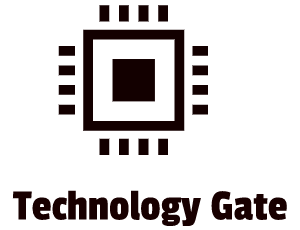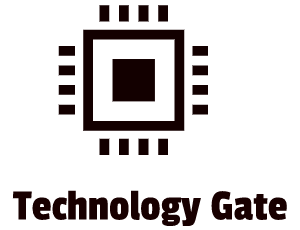Last weekend, we made a big leap forward by migrating from our old local domain to a new Azure Domain. It was no small feat, but thanks to my ICT Team and the assistance and flexibility of the remarkable users of our organization, we managed to minimize the impact on our business. We approached the project with SCRUM and Agile methodologies, which worked wonders, ensuring a smooth transition by continuously planning, testing, and developing. Together, we’ve accomplished something truly remarkable.
In the present era, succeeding in the technology industry necessitates technical expertise and essential life skills. While there are commonly held negative stereotypes about individuals in this industry, such as poor communication and shyness, it is crucial to dispel these perceptions and prioritize professionalism in the tech field.
This post aims to delve into the importance of being a professional in the technology industry, considering various factors, including appearance, ethics, communication, troubleshooting skills, and safety measures. By embodying these attributes, individuals with a passion for technology can leverage them to create a successful and satisfying career.
The Power of Professionalism: Dress for Success
As a tech professional, it’s crucial to understand the impact of dressing appropriately in our casual society. Your appearance can sway how customers perceive your competence and reliability. For instance, if a customer walks into a tech repair shop and is greeted by a tech professional in wrinkled and stained clothes, they may doubt the tech’s ability to solve their problem effectively. Conversely, a tech professional dressed in clean and wrinkle-free attire exudes competence and reliability, putting the customer at ease.
Moreover, personal hygiene is equally vital in maintaining professionalism. Neglecting basic hygiene practices such as showering, using deodorant, and grooming properly can lead to unpleasant experiences for customers and colleagues. By prioritizing cleanliness and personal grooming, tech professionals demonstrate respect for themselves and others, which enhances their professional image.
Ethics and Professionalism: The Foundation of Trust
In the tech industry, ethics and professionalism are intertwined and essential. As a tech professional, it is crucial to maintain honesty and integrity in all your interactions. This involves being truthful with your boss, colleagues, and customers, even when challenging. Building and maintaining trust is critical, and dishonesty can harm your reputation and erode people’s confidence in your abilities.
It is equally vital to prioritize the customer’s needs over personal gain. As a professional tech, you should strive to provide the most effective and cost-efficient solutions. Recommending necessary products or services to customers is commendable, but avoid pushing upgrades or services that do not benefit them but solely serve your interests.
Effective communication is another crucial aspect of professionalism. When communicating technical issues to customers, use simple language they can understand. Avoid technical jargon that could confuse or intimidate them. If you don’t have an immediate answer to a customer’s question, it’s okay to admit it. Tell the customer that you will find a solution and follow up accordingly. Being transparent and forthcoming in your communication fosters trust and a positive customer working relationship.
As a professional tech, you must maintain confidentiality. Treat any information you share as personal confidence and avoid disclosing customer information to others without proper authorization, except in cases involving illegal activities or immediate physical danger. Respecting confidentiality demonstrates professionalism and builds trust between you and the customer. To illustrate the importance of ethics and professionalism, let’s consider an example. Suppose a customer approaches you, suspecting their spouse of infidelity, and wants you to retrieve incriminating information from their partner’s computer. As a professional tech, you must adhere to a code of ethics and decline the request. Sharing personal information without consent breaches trust and violates professional boundaries.
The Art of Effective Communication: Listening and Empathy
Mastering effective communication is an indispensable skill that can either make or break a professional’s career in the tech industry. As a tech professional, you may encounter irate customers whose computers or networks malfunction. Giving customers your undivided attention and avoiding distractions is crucial during such interactions. Whether it’s a personal call or a discussion with a colleague, your complete focus should be on the customer. You can establish a strong rapport and better understand the customer’s concerns by actively listening and showing empathy.
Cultural sensitivity is a vital aspect of effective communication. In today’s diverse world, respecting and acknowledging customers’ religious practices, traditions, and cultural backgrounds is essential. Being culturally sensitive can create an inclusive environment that values and respects all customers.
The Ethics of Reciprocity principle in various religions advocates treating others as you would want to be treated. Applying this principle to customer interactions is vital in creating a positive work environment. Instead of dismissing or judging customers for the problems they may have caused, act as their advocate and guide them toward resolving the issue. Tech professionals can build trust and promote a better customer experience by demonstrating empathy and understanding.
To exemplify the significance of effective communication, imagine a scenario where a customer calls technical support, frustrated and upset about a recurring software issue. Rather than responding defensively or dismissing the customer’s concerns, a professional tech practices active listening and asks the right questions to obtain relevant information. By maintaining a supportive and friendly tone, the tech encourages the customer to provide more details, leading to a faster and more accurate diagnosis of the problem.
Troubleshooting Skills: The Art of Problem-Solving
In the world of technology, solving problems is crucial for success. Troubleshooting involves a methodical approach to identifying and resolving technical issues effectively. By adhering to a well-defined methodology, tech professionals can tackle problems with confidence and certainty.
A troubleshooting methodology consists of several steps:
1. Identify the problem: Interview the user to gather information about the issue and any recent changes. Review system and application logs for additional clues.
2. Establish a theory of probable cause: Formulate a hypothesis about the root cause of the problem based on the observed symptoms.
3. Test the theory: Verify the idea by testing and implementing potential solutions. If the theory is confirmed, proceed with resolving the problem. If not, revise the approach or escalate the issue.
4. Establish a plan of action: Develop a plan to address the problem and implement the chosen solution.
5. Verify full system functionality: Confirm that the problem has been resolved by testing the system’s functionality. If applicable, take preventive measures to minimize the chances of recurrence.
6. Document findings, actions, and outcomes: Maintain a record of the problem, steps taken, and the work for future reference and knowledge sharing. By following this systematic approach, professional techs can efficiently troubleshoot complex issues, minimizing downtime and ensuring customer satisfaction.
Safety Measures: Protecting Yourself and Your Environment
In the technology industry, safety is a top priority for professionals. The nature of the work involves various hazards and risks that could compromise the well-being of technicians. To ensure a secure working environment, it is important to adhere to safety protocols.
One area of particular importance is the safe handling of computing devices. The threat of electrostatic discharge (ESD) is a significant concern when working with sensitive computer components. Grounding yourself and the computer using anti-static wrist straps or mats to prevent ESD damage. These tools help maintain the same electrical potential, which shields the computer’s sensitive components from static electricity.
In addition, tech professionals must comply with government regulations regarding protective gear and environmental rules for hazardous material disposal. Proper organization and cable management are also key factors in preventing tripping hazards. Using appropriate techniques to avoid strain or injury is important when dealing with heavy boxes or equipment.
Maintaining cybersecurity practices is also critical for tech professionals. Adhering to password policies, implementing firewalls, and regularly updating software and firmware are crucial to safeguarding computer systems and protecting sensitive data. By following these safety protocols, tech professionals can create a secure working environment for themselves and their colleagues.
Final Thoughts
In the contemporary period, making a mark in technology requires technical dexterity and fundamental life skills. Despite the prevalent misconceptions regarding individuals in this industry, such as their purported poor communication and shyness, it is imperative to debunk these stereotypes and prioritize professionalism in the tech realm. This piece aims to delve deeper into the significance of being a professional in the technology sector while considering several factors, including appearance, ethics, communication, troubleshooting prowess, and safety measures. Technology enthusiasts can harness their potential and forge a successful and gratifying career by embodying these attributes.
Feel free to contact me if you have questions or in case you have any additional advice/tips about this subject. If you want to keep me in the loop if I upload a new post, subscribe so you receive a notification by e-mail.





